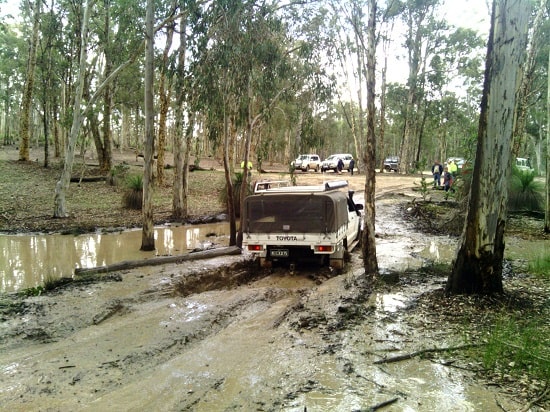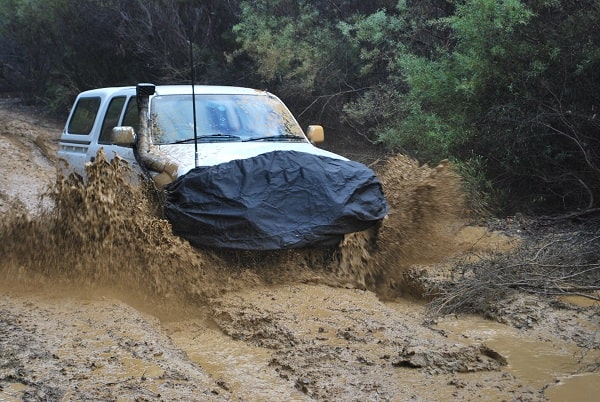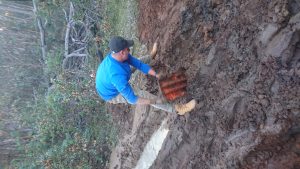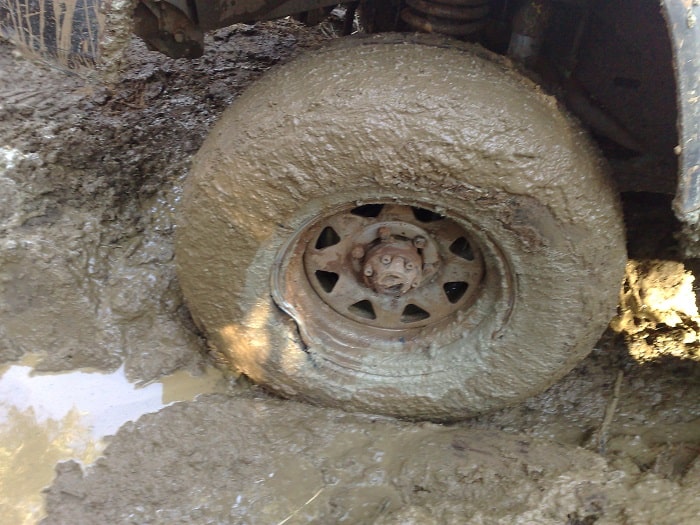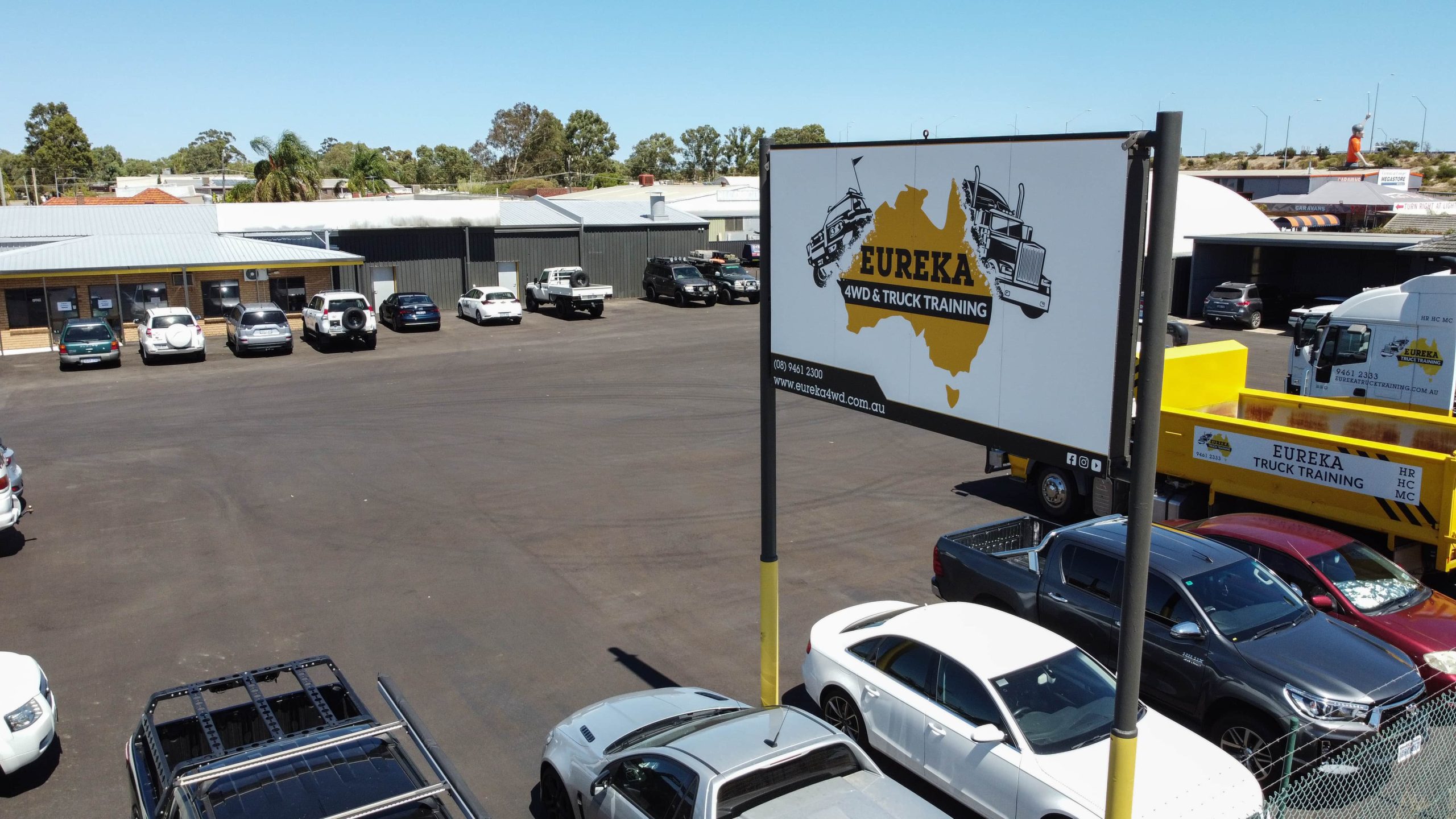Muddy Tracks Encountering
In all seriousness encountering muddy tracks is something we as 4wders all eventually have to encounter and yes being honest I actually used to go out of my way to find the sceptic ooze and as fun, as it can be it starts becoming not so fun after it starts emptying your bank account with constant mechanical and electrical problems.
Preparation:
Like any off-road situation that you can’t see ahead, stopping and inspecting is the key factor. Inspection should be at a minimum poking the mud with a stick to ascertain the depth and how soft the base is but in actual fact unless you put yourself in first you have no idea what is lurking underneath or how deep the wheel tracks are to the high centre mound in the middle. Who wants to do that though? Right nobody that’s who, so you really need to decide whether driving through is that important to risk getting stuck.
Tyres Deflating Process
Deflating your tyres to roughly 18-24PSI will be of huge benefit but do be aware that you will lose ground clearance and possibly have deflation issues due to foreign material in the bead. Obviously, this is where aggressive mud-terrain tyres do the job as the tread voids disperse the mud rather than becoming a slick such as a highway tread pattern.
Let your vehicle cool down to avoid possibly getting muddy water sucked into differentials and seals. Tie a tarp or invest in a water bra to help avoid too much mud against the radiator.
Attach recovery equipment prior to entering but be careful straps don’t become loose and go underneath the vehicle (Have straps from recovery points taught along with vehicle and wrap-around wing mirror than through the window)
If by yourself inspect prior for any usable solid anchor point to possibly winch off in case you do get stuck. Electric winches are by far our favourite recovery tool in mud. Have your long-handled shovel handy as well as traction boards.
Engage selectable traction aiding devices such as axle diff locks prior and if equipped with terrain management system select the traction mode for the terrain such as ‘Mud Ruts
Driving Technique:
As much fun as it can seem to be don’t enter at high speed as all you will do is push the mud/water into places you don’t want it to get (Remember as little as a cap of water can destroy your engine) Instead ease in and then apply momentum – gear selection depends on vehicle and terrain type but Low Range 2nd gear is generally sufficient (2nd start engaged for Automatics that are equipped with the feature).
Steady Your Acceleration
Try to keep the steady acceleration and the first sign of bogging down don’t be tempted to give it more right foot as more than likely your tyres will spin so fast you will end up stuck on your underbelly – STOP select reverse and keeping your wheels straight reverse back slowly, even half a vehicle length may be needed then taking off in Low range 2nd gear progressive acceleration and try again moving forward. It is only through a practical experience you learn to drive through the wheel-spin, stopping and reversing back is a better option.
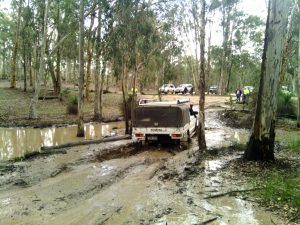

Being the first vehicle through mud that has been sitting for some time can be difficult as you will be pushing the mud in front of your tyres, quite often all that is needed is some backwards and forwards momentum to clear the path.
Swinging your steering wheels left to right is a technique we have never taught or used, very rarely does any benefit and ends up with ‘steering disconnect which means you lose direction of where your front wheels are turned. Keep your wheels straight-forward and definitely reverse.
Bugger:
As SOON as you feel that you can no longer go in either direction DON’T accelerate any further it will just make your day worse. You are stuck and need to be recovered. Now this is where you need to keep a cool head as recovering vehicles stuck in the mud can involve huge forces due to suction, recoveries from mud are dangerous don’t be fooled otherwise.
Rated recovery points or a suitable towing system without the tow ball are advisable. If Snatching is your only option try to dig as much mud in front of all four tyres as you can and clear as much from underneath the vehicle. Place as many dampeners as you have on the strap should it fail and please make sure there are no bystanders and only one person per vehicle.
Winching out is preferable if available, using a snatch/pulley block with rated equipment and a solid anchor such as a live tree.
Used of Traction Boards
Traction boards offer little by themselves if you are high centred in mud but are great when used in conjunction with a winch or snatch straps. DO take note though that tying your traction board to your vehicle is advisable or leave a length of rope tied to the boards off to the side of the track as they can get swallowed up by the earth very easily never to be seen again otherwise.
Exhaust jacks and Hi-Lift jacks can also be useful in mud to help break the suction and get better access for shovelling and placement of traction boards although can be quite dangerous as they can be unstable in mud.
Please don’t place sticks and pieces of wood under/in front of tyres unless you remove them afterwards. Apart from the fact timber offers little to no traction when wet/muddy they are potential objects for other track users.
Please use caution with any item of recovery equipment!
Success:
After holding your tongue the right way you’ve made it through, stop at the first opportunity where you can move off easily and inspect for any possible sign of damage and check the undercarriage for loose sticks etc.
Tyres and Rims Checking
Check your tyres and rims and make sure there are no leaks coming from the bead, inflate if needed to and reinspect your tyres for deflation problems a little further down the track.
Open the bonnet and inspect your radiator for signs of damage or foreign objects. Mud in front of radiators is a common cause of overheating problems off-road.
Driving On Gazetted Roads Precautions
If you are going to be driving on gazetted roads make sure your front and rear numberplate is clearly visible as well as windows to avoid attention from traffic enforcement.
As much as you might want that perfect coat of mud on the roof for some street credibility on the drive home the police don’t usually feel the same way.
Now for the reasons I’ll go out of my way to avoid mud – it gets very expensive;
Starter Motors, Alternators, Wheel Bearings, Seals, Brakes, Cooling systems, Electrical gremlins galore.
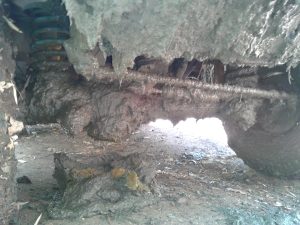

Vehicle Cleaning ASAP
Cleaning your vehicle asap after the mud is my strong advice, the goo literally destroys your vehicle.
As always please keep safe out there everyone, – Pete
Eureka 4WD Licencing & Training Courses
For more 4WD tips, reviews and articles from Eureka 4WD visit our blog page
Feeling adventurous? Then join us on a Eureka 4WD Training Course – we have courses to suit all levels of 4WD skill and experience.
Looking for Commercial 4WD courses or Certified 4WD courses? Visit our Commercial training page and find the course that will take your career to the next level.
Have you heard? Eureka 4WD has launched a training app design specifically for 4WDing – and the best part is that it is completely free!
Now you can have an expert with you at all times – available for Android and Apple users in the respective app stores.
Need a truck license? Eureka now offers HR, HC and MC truck training through Eureka Truck Training

